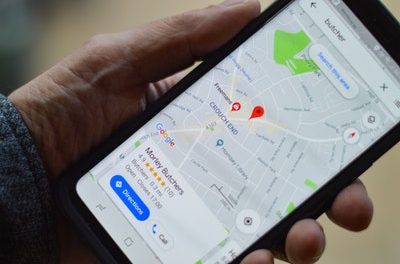
Text Links: Learn How to Use Text Links to Boost Rankings with a Sustainable, Organic Link Profile

SEO has become an obscure art as the Internet continues to evolve. As the ways that we use digital technology evolve, so do the search engines. That means the rules around SEO are always changing.
While SEO has changed a lot in the last 10 years, some things have remained the same. Backlinks and domain authority remain as relevant as ever, if not more so.
How do the search engines determine backlinks and relevant content, though? Simple: text links.
We’re here to tell you all about text links. We’ll show you how to get them, how to use them, and what they mean.
Your Complete Guide To Text Links
Let’s start off by defining our terminology, shall we?
What Are Text Links?
The definition of a text link is simple but the implications are profound. A text link is any words on a webpage that are hyperlinked to other digital content.
Text links are more than simply linked words on a page, however. They yield some of the highest conversions and click-through rates out of any digital content. They are also basically the bread-and-butter of SEO.
Search engines assume that external websites are unbiased when it comes to assessing what a piece of web content is about. Search engines weigh external text links heavily, because of this. It’s an antidote to the black hat SEO keyword stuffing of previous eras.
But how do you get text links? There are a few ways to go about this.
How To Use Text Links
Text links come in two main formats. Internal text links point to content from the same website. External text links hyperlink to another web domain. Let’s look at both, shall we?
Internal Links
Internal links are important for how search engines rank a website. They help them to know what’s contained on the site as well as showcasing relevancy.
Internal links come in two main forms – absolute links and relative links. Absolute links point to a full website URL, including the domain and the protocol. Relative links, on the other hand, only uses a portion of the web address. This forces web browsers to assume it’s referring to the same domain.
For example, https://www.textlinks.com/category/local-search/ is an absolute link. If you were to use /about-us, that would be a relative link.
Many website elements are actually internal links. Menus and navigational elements both count as internal links.
Some navigational elements that are actually internal links include:
- Headers
- Tag clouds
- Footers
- Breadcrumbs
Internal links that aren’t navigational elements come in three main formats.
The most common form of internal link is one that provides additional information or context for a webpage. This works similarly to how external links function and for similar reasons. It helps the search engines know what a piece of content is about.
Promotional links are another common form of an internal link. This points your audience to products or services they may be interested in based on the content they’re looking at. Think of this as word-of-mouth advertising on the digital plane.
Internal links also help a website rank for a particular keyword or phrase. Considering how difficult it’s become to get legitimate backlinks, this is reason enough to work internal linking into your SEO strategy.
All of these internal linking strategies help search engines to crawl your website faster and with greater accuracy.
Why Internal Linking Matters
Internal links affect your website in numerous ways. There are all the SEO benefits we’ve already mentioned. It also helps improve audience engagement.
Internal links increase time spent on your web page. They also increase the page views per session as well as the conversion rate.
External Links
External text links are any hyperlinked text that point to a digital domain other than your own. An example of an external link looks like <a href=”http://www.external-domain.com/”>Link Anchor Text</a>.
When you’re linking to other people’s content, make sure to use relevant anchor text. This will help the site you’re linking to rank for the keywords provided.
Make sure to not use the same keywords all the time, however. This can read like duplicate text to the search engines and get your site dinged for plagiarized content.
How To Get External Links To Your Website
This is really the million dollar question. Getting genuine, authoritative backlinks has become the Holy Grail for SEO. Mainly because there’s no easy way to do so.
It all begins with finding authoritative websites. You might use an SEO analyzer like Ahrefs to find websites that rank highly for the keyword you’re searching. Then you might pick through their site and find authors writing about the subjects you’re trying to rank for.
You might reach out to those writers directly and discuss some sort of link exchange. This is a time-intensive pursuit, however. Journalists, bloggers, and website owners are busy people, even the little ones.
If you’re link building for a relatively new site, your best bet is to focus on sites with slightly lower SERP rankings. If you’re writing about finance, for instance, you’re going to have a hard time getting a backlink from Forbes. You might be able to score a backlink from MoneyMorning, however.
When it comes to gathering external backlinks, you’d do well to remember the Golden Rule. “Do unto others as they do unto you.” Which is to say, link to other people’s content and build actual relationships.
You’d be amazed at how often people reciprocate when you link to their content. It’s an automatic dose of good will from your fellow bloggers and website owners.
Want To Learn More SEO Secrets?
As the Internet continues to evolve, so will the search engines. Google’s always figuring out new ways to bring the most relevant content to its users. It’s best to get into these best practices now and make them automatic.
Whether you’re looking to understand text links or the latest SEO trends, we bring you everything you need to help your content get noticed.











































